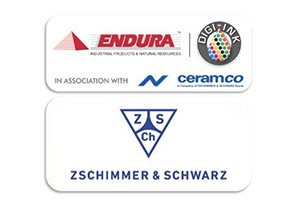How to Achieve High-Quality Tile Prints with Digital Inks
Learn how to achieve high-quality ceramic tile prints with digital inks in this comprehensive guide. Explore key factors like ink selection, glazing techniques, firing processes, and the role of materials like frits, pigments, and ceramic stains in tile manufacturing.
The demand for beautifully designed ceramic tiles has grown significantly, driven by advancements in printing technology. Ceramic Digital inks play a crucial role in creating high-quality prints on tiles, offering precision, vibrant colours, and intricate patterns. However, achieving the best results requires careful attention to various factors and an understanding of the other products involved in the tile-making process.

This guide explores how to produce superior tile prints using digital inks and highlights other materials that contribute to the overall quality of ceramic tiles.
Understanding Digital Inks in Tile Printing
Digital inks are specially formulated for ceramic printing. They contain fine ceramic pigments suspended in a liquid base, ensuring even application and adherence to the tile surface. These inks are designed to withstand high temperatures during the firing process, maintaining their colour and vibrancy even in extreme conditions.
To achieve high-quality prints, it’s essential to choose the right digital ink based on your specific requirements. Consider factors such as:
- Colour Range: Ensure the inks provide a wide palette for creative designs.
- Particle Size: Fine particle size ensures smooth application and reduces the risk of clogging printheads.
- Durability: Inks should be resistant to fading, scratches, and wear over time.
Steps to Achieve Superior Tile Prints
- Select the Right Base Tiles High-quality printing starts with a well-prepared base tile. Tiles must be free from surface defects, flat, and uniformly glazed to ensure a consistent printing surface.
- Use High-Precision Printing Equipment Invest in advanced digital printing machines equipped with reliable printheads. Regular maintenance of these machines is critical to avoid streaks, smudges, or uneven ink distribution.
- Optimize Ink Settings Configure the printer settings to match the type of ink and design being printed. Proper temperature, speed, and pressure settings ensure even coverage and sharp details.
- Employ Effective Glazing Techniques A layer of glaze is applied to tiles before and after printing. Pre-print glazing ensures the surface is smooth, while post-print glazing protects the design and adds a polished finish.
- Fire the Tiles Correctly The firing process fixes the ink to the tile surface, ensuring durability. Maintaining the correct temperature and firing duration is crucial for achieving vibrant, long-lasting designs.
Other Products Used in Tile Manufacturing
Apart from digital inks, several other materials contribute to the production of high-quality ceramic tiles:
- Frits Frits are glassy materials added to ceramic glazes to enhance durability and aesthetics. They improve the surface finish, making tiles more resistant to stains and scratches.
- Pigments Inorganic pigments are used to create a variety of colours in ceramic tiles. These pigments are mixed with frits and applied as a glaze or integrated into digital inks for printing.
- Ceramic Stains Ceramic tile stains are used to achieve specific colours and effects in tiles. They are mixed with glazes or digital inks to produce vibrant and consistent hues.
- Binders Binders are chemical agents that hold ceramic particles together during tile production. They ensure the tiles remain intact before firing.
- Engobe Engobe is a liquid clay coating applied to tiles before glazing. It improves adhesion, enhances the surface finish, and prevents glaze defects.
- Additives Additives such as deflocculants, dispersants, and viscosity modifiers are used to improve the consistency and performance of ceramic materials.
Tips for Consistent Results
- Regularly Clean Printheads: Prevent clogging and ensure smooth ink flow.
- Monitor Production Conditions: Maintain optimal temperature and humidity levels in the production area.
- Conduct Quality Checks: Inspect each batch of printed tiles to ensure consistent colour, sharpness, and finish.
- Collaborate with Suppliers: Work closely with ink and material suppliers to stay updated on the latest advancements and best practices.
High-quality tile prints require more than just advanced digital inks. The success lies in the careful selection of materials, precise application techniques, and a deep understanding of the tile manufacturing process. By combining the right digital inks with complementary products like frits, pigments, and glazes, manufacturers can produce stunning ceramic tiles that meet the demands of modern consumers. With attention to detail and the right tools, achieving exceptional tile prints is not just possible—it’s guaranteed.